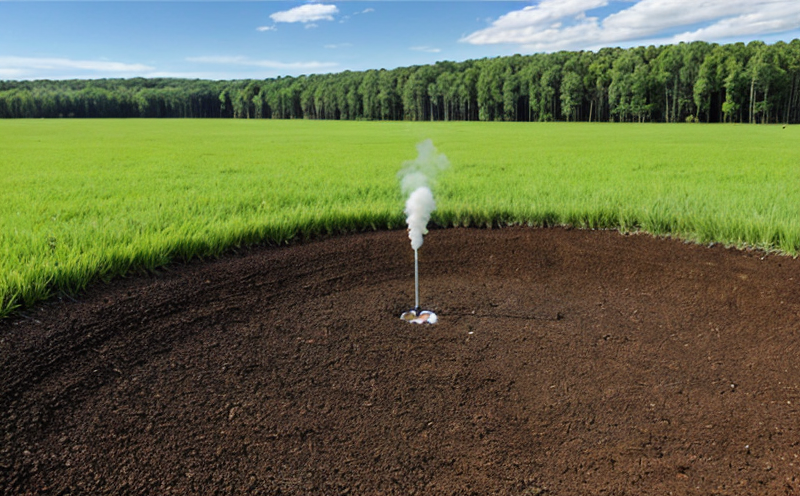EN 14899 Waste Characterization Sampling Testing
The European standard EN 14899:2005 provides a framework for the sampling and characterization of waste, aimed at ensuring accurate identification and classification of waste materials. This testing is critical in the mining sector where environmental impact assessments are paramount to sustainable practices.
Accurate waste characterization allows for better management of resources by identifying hazardous components early in the lifecycle of a project. For instance, it helps in deciding whether certain materials should be recycled or disposed of through specific methods that minimize environmental harm. This testing is particularly important in mining operations where tailings and other by-products can have significant impacts on surrounding ecosystems.
The sampling process under EN 14899 involves the collection of representative samples from various points within a waste stream, followed by detailed analysis to determine characteristics such as moisture content, particle size distribution, and chemical composition. This ensures that any potential risks associated with handling or disposal are fully understood before proceeding.
One key aspect of this testing is the use of appropriate sampling techniques which can vary depending on the type of waste being assessed. For solid wastes like tailings dams, stratified random sampling may be used to ensure all layers of the material are represented in the sample. Liquid wastes might require continuous monitoring and collection over time to capture variations that occur naturally within the stream.
The results from EN 14899 testing play a crucial role in decision-making processes throughout mining operations, including but not limited to compliance with regulatory requirements set forth by authorities like the European Commission. By providing precise data on waste composition and properties, this service supports efforts towards more sustainable practices that reduce environmental footprints.
It’s worth noting that while EN 14899 focuses primarily on physical and chemical parameters of solid wastes, it also considers biological aspects when necessary. This holistic approach ensures comprehensive understanding of all potential impacts arising from different types of waste generated during mining activities.
In conclusion, adhering to the principles outlined in EN 14899 helps mines operate responsibly while minimizing adverse effects on local environments and communities. Through rigorous sampling protocols and thorough characterization analysis, this service contributes significantly towards achieving sustainable development goals within the mining industry.
Why It Matters
The importance of EN 14899 Waste Characterization Sampling Testing cannot be overstated in today’s regulatory landscape. Compliance with relevant standards is essential not only for avoiding legal penalties but also for maintaining the integrity of mining operations.
By accurately characterizing waste streams, mines can implement appropriate treatment and disposal methods that protect both human health and the environment. This reduces risks associated with improper management practices such as leaching of toxic substances into groundwater supplies or soil contamination leading to biodiversity loss.
The testing also facilitates better resource recovery by identifying valuable materials within what would otherwise be considered waste. Efficient use of these resources can lead to cost savings for mining companies while contributing positively to global sustainability objectives.
Moreover, transparent reporting on waste management practices enhances public trust in mining activities. Stakeholders including investors, local governments, and community groups expect clear evidence that environmental impacts are being managed responsibly. Adherence to EN 14899 helps meet these expectations by providing robust documentation of all relevant factors involved in the process.
Ultimately, incorporating this testing into routine operations demonstrates a commitment to sustainable practices which benefits stakeholders across various sectors including mining itself, regulatory bodies overseeing compliance, and broader society at large.
Scope and Methodology
| Aspect | Description |
|---|---|
| Sampling Techniques | Involves collecting representative samples from various points within the waste stream, ensuring all layers and components are adequately represented. |
| Analytical Methods | Includes physical characterization (e.g., particle size distribution) and chemical analysis to determine key properties of solid waste materials. |
| Biological Assessments | Pertinent in certain cases where biological characteristics influence the overall impact on ecosystems. |
The scope of EN 14899 encompasses not just laboratory-based analyses but also field sampling and preliminary assessments conducted at source locations. These steps ensure that samples collected are representative of actual waste conditions rather than altered by transport or storage processes.
Methodologically, the standard emphasizes the need for trained personnel who follow standardized procedures throughout the entire process from sample selection to final report generation. This ensures consistency and reliability in results across multiple sites and over time periods.
Industry Applications
| Application Area | Description |
|---|---|
| Environmental Impact Assessments (EIAs) | Prior to initiating new projects, EIAs require comprehensive waste characterization data to assess potential environmental impacts. |
| Regulatory Compliance | Mines must demonstrate adherence to local and international regulations governing hazardous waste management. |
| Resource Recovery Initiatives | Identifying valuable materials within waste streams enables better resource recovery efforts, enhancing overall efficiency. |
In practice, EN 14899 Waste Characterization Sampling Testing plays a vital role in several critical areas of mining operations:
Firstly, during the planning phase of new projects, thorough waste characterization helps identify potential risks associated with different types of wastes generated. This information is crucial for designing effective mitigation strategies and selecting suitable treatment options.
Secondly, ongoing compliance monitoring ensures that mines continue to meet stringent regulatory requirements set by governing bodies like the European Commission or national authorities. Regular testing provides up-to-date insights into changing waste characteristics over time, allowing adjustments in management practices if needed.
Finally, resource recovery initiatives benefit greatly from accurate characterization data which highlights opportunities for reusing or selling off valuable materials found within waste streams. This not only reduces costs related to disposal but also contributes positively to circular economy principles by promoting sustainable use of natural resources.





